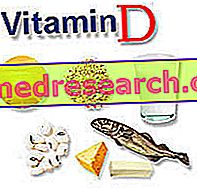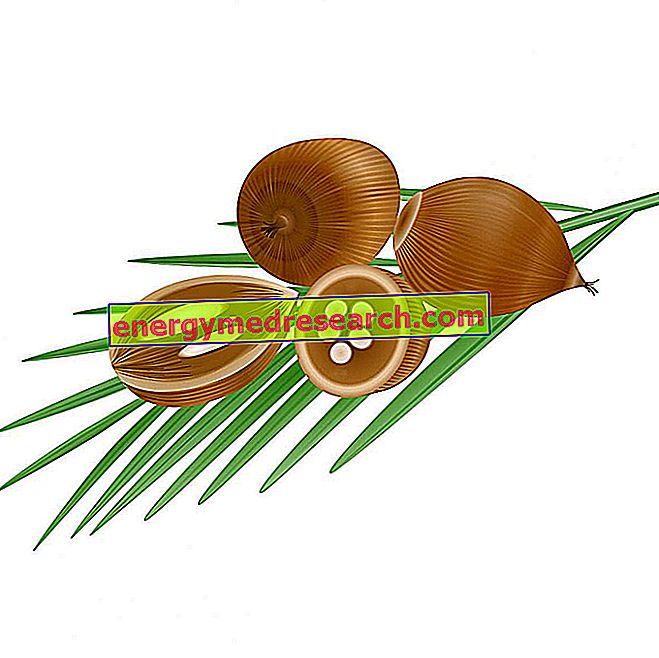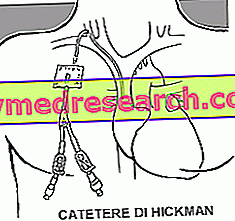Food sources of vitamin D are quite limited and include fortified foods - such as some breakfast cereals - and foods rich in animal fats, such as butter, whole milk, egg yolk, fatty fish, fish oils and beef ; also certain fungi, depending on the sun exposure during cultivation, can represent good sources of vitamin D.

»Vitamin D supplements
»Daily vitamin D requirement
»Risks of toxicity and overdose
»Intake dosages
Although dietary intake is often deficient, especially in strict vegetarians, it is not normally necessary to resort to specific vitamin D supplements . This micronutrient can in fact be synthesized in the skin starting from cholesterol, following exposure to UVB rays; the possibilities of synthesis are however reduced by atmospheric dust and above all by sunscreens, which when they have a protection factor higher than eight can even stop it completely. It must be said, however, that in general not all the skin is covered with cream, which moreover is not generally reapplied with the required regularity. By virtue of all these factors, and obviously of the latitude, it is difficult to establish what is the time of solar exposure necessary to cover the daily requirement of vitamin D. It is generally suggested that an exposure of 5-30 minutes a day, in at least one a couple of weekly occasions and during the hottest hours, it is sufficient in this sense; it is not necessary to expose the whole body, just discover the arms, face, legs or back. The frequency is more important than the quantity, given that excessive and unprotected sun exposure, as well as being a known risk factor for melanoma, does not involve additional benefits on the synthesis of vitamin D. It should also be specified that the organism is able to preserve the accumulated quota to make it available when needed, for example during the winter.
Vitamin D supplements
In supplements, as in fortified foods, vitamin D may be present in two different forms, D2 (ergocalciferol, of fungal and vegetable origin) and D3 (colecalciferol, of animal origin). The latter proved to be more bioavailable, even if in this regard there are conflicting opinions; regardless of their origin, to become biologically active, vitamin D must undergo a double hydroxylation, first of all in the liver and then in the kidney. Once activated, it behaves like a real hormone, acting above all in the intestine to enhance the active absorption of food calcium. It therefore contributes to the homeostasis of calcemia and to adequate bone mineralization.
Deficiencies in vitamin D can be manifested by one or more of these factors: insufficient dietary intake, reduced capacity for intestinal absorption (malabsorption diseases), chronic renal diseases (due to the inability to activate vitamin D) and insufficient sun exposure. Serious vitamin D deficiencies determine rickets in children and osteomalacia in adults (reduced bone mineralization, with or without skeletal malformations, respectively). Among the factors that expose individuals to a greater risk of vitamin D deficiency, we recall:
- dark complexion (melanin hinders skin synthesis, even if those with darker skin run a lower risk of osteoporosis);
- milk allergy, vegan diet or lactose intolerance (lack of foods rich in vitamin D), age over 50;
- obesity (adipose tissue sequesters vitamin D in proportion to its mass, however it is a protective factor against osteoporosis);
- reduced sun exposure and problems with intestinal fat absorption (biliary diseases, cystic fibrosis, Crohn's disease, Orlistat, cholestyramine, chronic abuse of laxatives etc.).
Vitamin D supplements, in combination with calcium supplements, are mainly recommended for postmenopausal women as a preventive strategy against osteoporosis. This practice is opposed to replacement estrogen therapy, since the lack of these hormones contributes significantly to the onset of the disease; being an endocrine therapy, with potential side effects, in most cases doctors prefer to rely on the simple integration of calcium and vitamin D.
The combined use of these supplements can also be combined with a prolonged treatment with corticosteroids, in order to prevent osteopenia induced by these drugs (reduction of bone mass).
Other conditions that justify the use of vitamin D supplements: osteomalacia, rickets, familial hypophosphataemia, Fanconi syndrome, secondary hyperparathyroidism due to low levels of vitamin D, hypocalcaemia due to hypoparathyroidism, psoriasis, muscle pain and weakness, bone problems from chronic renal failure.
Vitamin D online

Online is available a supplement of Vitamin D3 1, 000 IU in gel capsules, containing uncontaminated ingredients and without impurities that help to keep the immune system strong and healthy, to strengthen teeth, bones, joints and to increase muscle functions. The properties are confirmed by the European Food Safety Authority (EFSA).
The product is gluten-free, GMO-free and certified as a natural and organic product.
Each pack contains 365 gel capsules, 100% organic vegetables.

Alternatively, you can opt for a vitamin D 2000 IU food supplement in a pack of 100 softgels, a hormone whose action is directed to every cell, tissue and organ in the body.
The recommended dose is one pearl per day. Before hiring, we recommend that you share the choice of starting this type of integration with your doctor.
Vitamin D supplementation »
Sponsored content: My-personaltrainer.it presents products and services that can be purchased online on Amazon and / or on other e-commerce sites. Whenever a purchase is made through one of the links on the page, My-personaltrainer.it could receive a commission from Amazon or other cited e-commerce. We inform you that the prices and availability of the products are not updated in real time and may change over time, so we invite you to check availability and price on Amazon and / or on other cited e-commerce.



